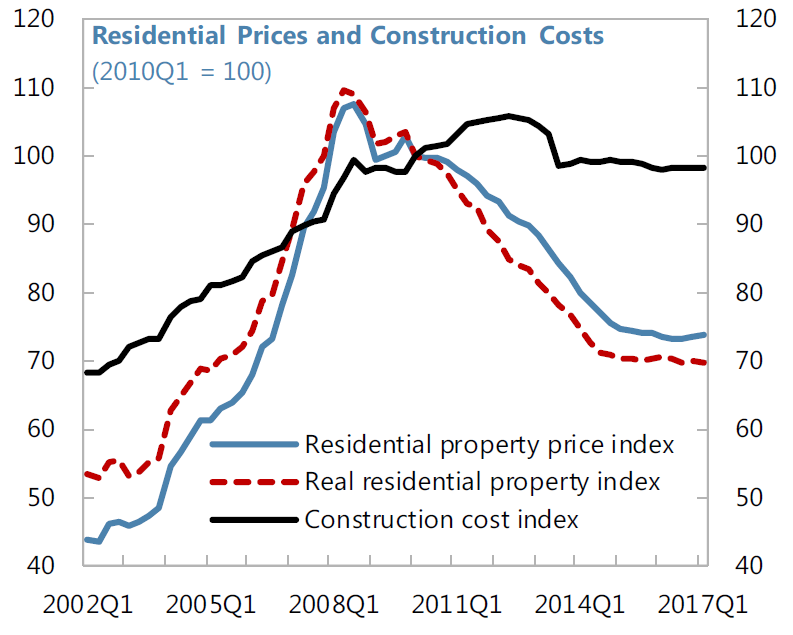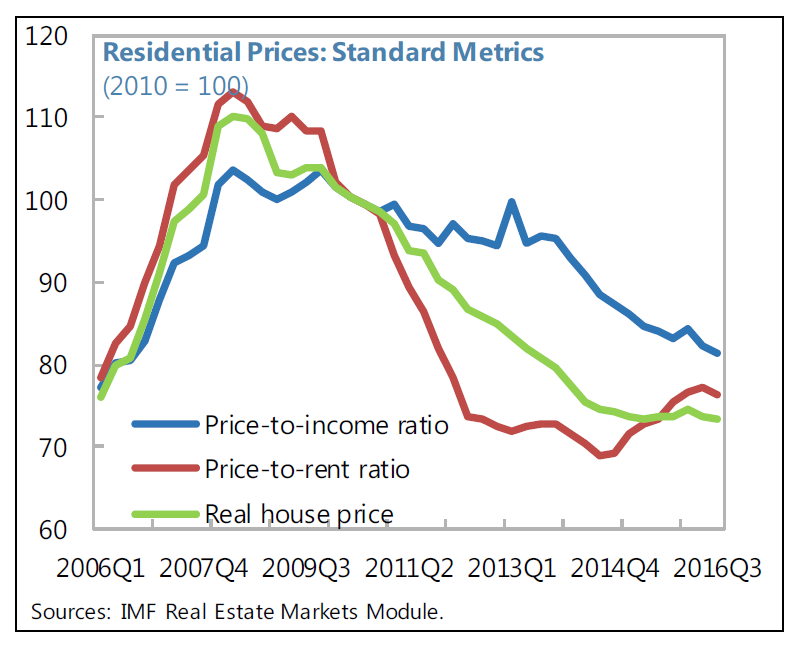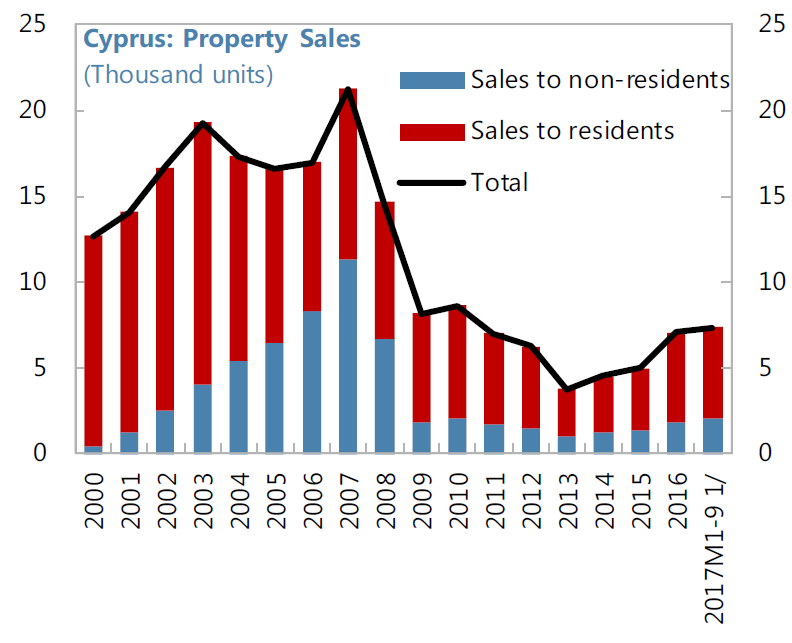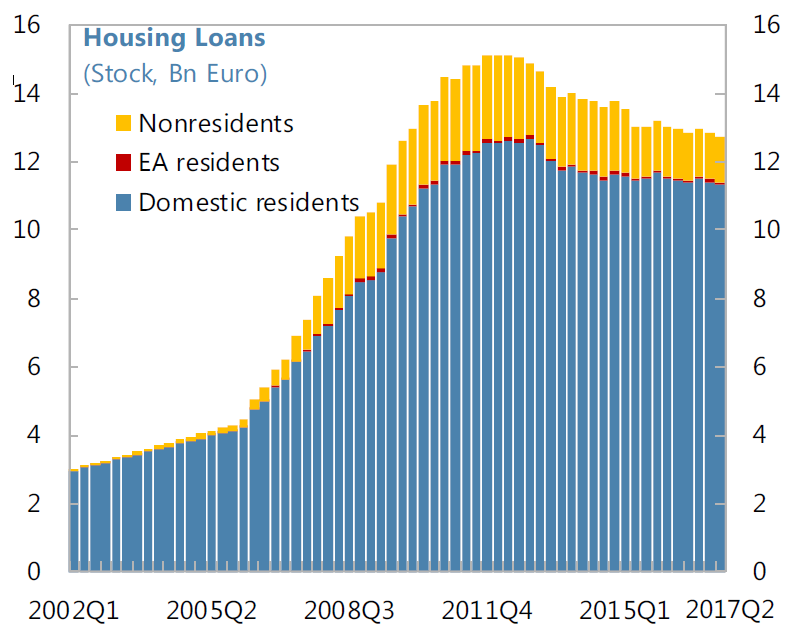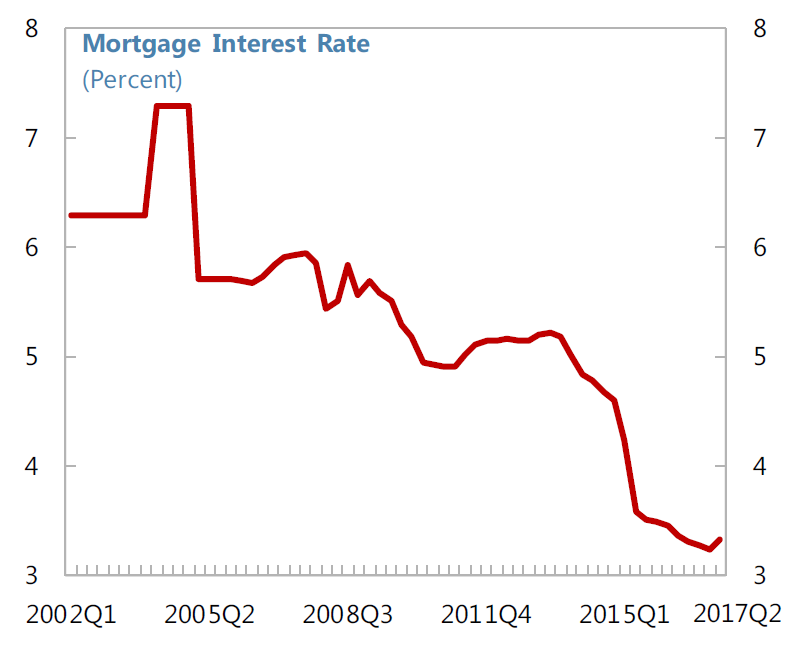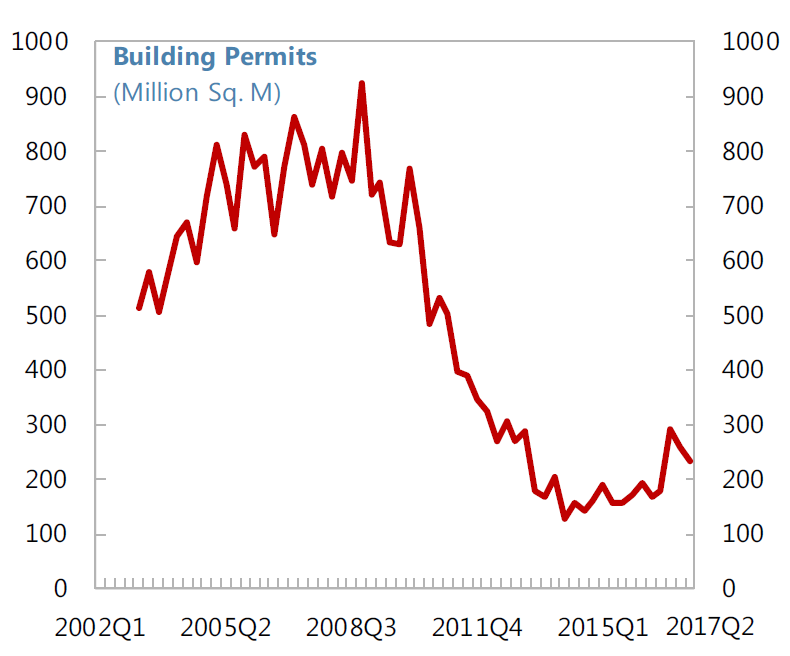Sunday, December 17, 2017
House Prices in Cyprus
The IMF’s latest report on Cyprus says that:
“After falling sharply, property prices are now rising marginally while transactions are recovering, especially in the luxury segment. Prices declined 30 percent (residential) and 50 percent (retail) relative to the 2008–09 peak, stabilized in 2015, and rose moderately since mid-2016. Price-to-rent and price-to-income ratios have returned to historical levels.6 With at least two thirds of loans collateralized with real estate, moderate price growth will increase banks’ NPL cover and borrowers’ net worth. However, prices have also benefited from the limited number of foreclosures, while turnover is more active in the luxury market owing in part to the CbI scheme.
Increased construction activity has supported the recovery, and associated risks appear manageable. Tax and other incentives targeting the property sector helped to stabilize prices and bring jobs and economic growth. The fact that large luxury construction projects are mainly foreign financed or financed through pre-selling helps to limit financial stability risks. The CbI scheme is a general investment scheme, although real estate is the major beneficiary. Regulatory improvements to the CbI—with stricter controls on intermediaries (including real estate agents and lawyers)—are being considered, but there are no plans to amend the eligibility criteria. Some construction projects will generate future revenue streams (e.g., the casino and marinas) that will underpin their value. However, resale prices of residential units could be affected if too many are built, which could spread to prices of other properties. While developers have not relied on domestic bank financing so far, caution is needed to prevent a recurrence of such bank exposure, and tightening of lending standards is warranted for developers and in the event foreign demand spills over to the housing market for the general population. To comply with EU requirements, VAT will be imposed on transactions of buildable land, thereby partly offsetting—from a tax-incidence perspective—the previous elimination of the IPT and reduction in property transfer fees.”
Posted by at 5:01 PM
Labels: Global Housing Watch
Subscribe to: Posts
